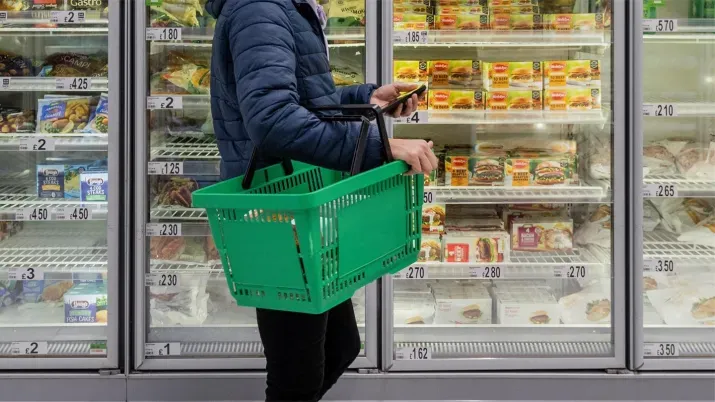UK data shows economy catching up with Bank of England
When the Bank of England (BoE) cut interest rates for the first time in four years earlier this month, we thought the move – made on a knife-edge 5-4 vote – had come a little too early.
Despite headline inflation having fallen to the BoE’s 2% target, we felt core inflation at 3.5% and services inflation at 5.7%, added to an economy showing signs of rebounding after last year's technical recession, was reason enough to delay the first rate cut until there was more consistent evidence of declining inflationary pressures across all sectors.
After a busy week of UK economic data, we can now examine whether the BoE has been vindicated.
Unemployment and wage growth look promising
On Tuesday we learned UK unemployment surprisingly fell to 4.2% in Q2, down from 4.4% in Q1, with the monthly reading of 3.6% for June the lowest since February 2022. While a positive sign, the unemployment data must be taken with a pinch of salt since the UK’s Office for National Statistics (ONS) itself acknowledges the persistently low response rate to its survey. That said, data on total numbers in the workforce, vacancies and the vacancy-to-unemployment ratio also suggest the labour market is holding up.
The more important number on Tuesday was the continued slowing of wage growth. Average weekly earnings (AWE) fell to 5.4% in June, down from 5.8% previously. Private sector wage growth fell to 5.2% from 5.6% previously and public sector pay growth also eased. The BoE’s main focus will be private sector wages given their direct impact on inflation numbers, and the recent progress here helps validate the rate cut.
Speaking of inflation, Tuesday also brought the latest food price data from Kantar, which showed grocery inflation rose to 1.8% in the four weeks to August 4, up from 1.6% in the previous four-week period. While this wasn't a huge increase (and the first increase of any kind in 17 months), it does demonstrate why food prices will offer little further help in reducing headline inflation going forward.
Inflation steady but services the key
On Wednesday, Consumer Price Index (CPI) data showed headline inflation rose to 2.2% year-on-year in July from 2.0% the previous month, though this was short of the consensus 2.3% and the BoE forecast of 2.4%. Core inflation (excluding food and energy) came in at 3.3%, down from 3.5% the previous month and under the 3.4% consensus. The increase in the headline number was expected due to energy prices falling less this year than they did in July 2023, a factor which is expected to push up headline inflation again in October. The key number in the CPI data was services inflation, which dropped to 5.2% from 5.7% previously and below the expected 5.5%, reducing the headline number by a full 0.2%. The drop was driven almost entirely by airfares and accommodation (specifically hotel prices). It is worth noting that both these numbers are volatile and can be heavily influenced by their collection date, which came earlier in July. If their collection dates had come later in the month during the UK school holidays, the overall services inflation number could have been more in line with the 5.5% consensus.
Overall the inflation data will have been welcomed by the BoE and again supportive of its decision to cut. It is worth noting that the goods and energy components are unlikely to help bring headline inflation down going forward, and services inflation needs to continue falling to help the central bank remain close to its 2% target.
Construction, manufacturing supporting growth
GDP growth data was next to arrive on Thursday, showing the UK economy grew 0.6% in Q2, in line with expectations but slightly below the BoE’s revised forecast of 0.7%. This follows 0.7% growth in Q1 and represents a strong rebound from the technical recession in Q4 2023. The main driver of Q2 growth was a 1.4% increase in government expenditure, while household consumption growth disappointed at 0.2% versus an expected 0.5%. Households remain reluctant to spend and have prioritised savings; the current household saving rate of 11.1% continues to climb and remains well above pre-pandemic levels of 5-6%. Once consumers feel comfortable interest rates are beginning to come down, this higher savings rate could help them support continued growth through the end of 2024.
Looking at the month-on-month GDP numbers, notable strength came from industrial production (0.8% vs. 0.1% expected) helped by manufacturing production (1.1% vs. 0.2% expected). We also saw a 0.5% gain in construction output versus -0.4% expected, thanks to improved weather in Q2. It is worth noting the ONS reported firms putting orders on hold during the summer general election campaign, so this manufacturing and construction momentum may provide a further lift to GDP in July and August.
Retail sales adding to growth momentum
Retail sales rounded off the bumper week for UK data on Friday, and the numbers were very much in line with expectations with month-on-month growth of 0.5% in July driven mostly by department stores and sporting equipment. This followed a weather-weakened June number (which was revised up slightly). The key trend here is the gap between sales volume and sales value remains high; consumers are paying more for less. These numbers can be volatile, but retail sales volume grew 1.1% year-on-year for the three-months to July, the second strongest increase in nearly three years, an encouraging sign and showing the growth momentum is strong into Q3 2024.
Trends make case for UK fixed income
On the balance of this week’s data, the BoE's decision to begin its rate cutting cycle on August 1 seems justified. However, the path for future rate cuts from here relies heavily on wage growth and services inflation continuing to fall back towards their pre-Covid levels. Core goods, food, and energy prices have significantly slowed, stopped or even reversed their disinflation trends, which will lessen their contribution to keeping headline inflation close to target from here. In subsequent rate decisions, the BoE’s policy makers will have to weigh an improving growth story with a (hopefully) continued fall in wage and services inflation.
Despite cutting rates, the BoE struck a cautious tone at its last meeting. It did not commit to further cuts in the near term and reiterated that it is now more focused on broader trends than individual data points. The BoE’s forecast is for headline inflation to rise to 2.75% in the second half of this year before falling below target over the medium term. The central bank’s view is that 5% is still adequately restrictive, and this week’s data supports this.
Over the week we saw Gilt yields tighten by 10-15bp across the curve, before a strong retail sales number in the US on Thursday sent yields 10bp higher across the curves of US Treasuries, Bunds and Gilts. As of Friday morning, the UK curve was pretty much where it began the week with the longer end around 5bp tighter. Markets are currently projecting two more 25bp cuts from the BoE by year-end, weighted towards November and December.
For fixed income investors, the obvious ideal scenario is a benign combination of improving growth and behaving inflation to confirm the achievement of a soft landing for the UK. Sentiment towards UK assets has taken something of a battering over the last two years (or perhaps more accurately the last decade) with a general sense of incompetence stemming from the execution of Brexit, the response to Covid-19 and a period of profound political instability culminating in the Truss Tantrum, all added to the fact the UK fared worse than the US and Europe in its bid to tame post-pandemic inflation. While a handful of data points are unlikely to shift sentiment dramatically, a continuation of the trends we observe above would strengthen the case for more comfortable and serious allocations to UK fixed income; that could accelerate the unwinding of the incompetence premium attached to UK assets and fixed income over recent years.




